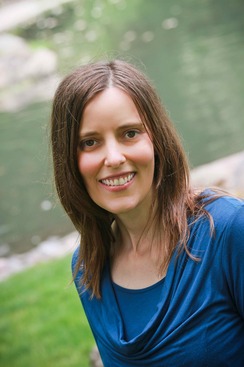Searching for Nature in the City: A Q&A with Dr. Lea Schweitz
March 29, 2016 • By Lea Schweitz
Urbanization is an inescapable feature of modern life. But many believe that embracing life in the city means foregoing our connection to nature. In her research for The Enhancing Life Project, Lea Schweitz, Associate Professor of Systematic Theology/Religion and Science at the Lutheran School of Theology at Chicago and the Director of the Zygon Center for Religion and Science, is building a new infrastructure of ideas that has the potential to revitalize the way we interact with urban nature. She is focusing on a number of case studies in the Chicago area, including an urban wetlands and a repurposed meatpacking plant. Her interdisciplinary project aims to reclaim the urban context for thinking theologically about nature. The project website, www.wildsparrows.com, shares some of the results of this creative synthesis.
Read a blog post by Lea Schweitz on re-naturing the city here.
What was the spark for the research you’re pursuing for the Enhancing Life Project?
The questions that I’m exploring came together in my teaching. I realized that when we got to the theme of creation, my students struggled to see God as creator at work in the city. And that makes sense, in a certain way: for example, there are certain ways of reading Christianity that are quite anti-urban. But given the trends toward urbanization and all of this research about how important nature is for human wellbeing, it seemed like we had to think about how we can open up the city as a place where you can see both nature and God at work in it.
Part of my goal is to help un-hook city dwellers from some conceptual baggage that seems to accompany the idea of nature, particularly in the American context. Here, there is a strong link between nature and wilderness. Nature as wilderness is big, and it’s pure. It’s “just” nature. If you make those assumptions, it’s going to be hard to find nature in the city. Nature in the city is never “just” nature—it always has to multi-task. It’s a park and a transportation corridor; it’s a nature sanctuary and a wastewater management system. But that doesn’t mean we can’t or shouldn’t recognize it as nature.
What does “urban nature” mean in the context of your work?
I’m exploring case studies, which are helping me think through different conceptions of urban nature. Most of my sites complicate how we view nature. For example, I’m getting to know this marsh in Hegewisch, down in the far south of Chicago. It’s this lovely, diverse space that has vernal pools and wet prairies. It’s a stop for migratory birds and frogs. And it’s situated in the Calumet region next to a Ford automotive plant, and the back of a landfill. There’s a train on one side too. It’s this really funny acoustic space: almost percussive.
I’m also investigating a space at 47th Street, between Lakeshore Drive and the commuter train line. It’s called a nature sanctuary, but it’s really, really loud because it’s right next to the highway and railroad. I’m not sure what’s happening with this place yet. It has boardwalks and volunteer days. Yet, it’s sort of this wild, noisy, narrow, reclaimed urban space. So far, on my site visits I’ve only seen crows. It’s urban nature, but it’s not clear yet how the plants and neighborhood animals – human and nonhuman – will find sanctuary there.
You’re also investigating the theological possibilities of urban nature. How can we see God in urban nature?
One of the foundations for this project is the idea that the “book of nature” can also speak about God’s presence and who God is. If we’re really listening to the book of urban nature, what is it that we hear? The first part of the project has just been an attempt to see and hear urban nature, because that’s been a contested, problematic space. And once we see and hear that, there are theological lenses that get built in, including a vision of us as created beings and co-creators, in partnership with the nature that we find in the city. And we also get a lovely sense of the sacramental vision of nature, where finite things of urban nature become spaces of possibility for the infinite.
How do public debates shape your work? What are you hoping to offer those debates?
I’ve thought a lot about this one, especially with respect to climate change. There’s this clumsy term that I’ve seen used in climate change circles called “artivism,” which is a mash-up of “art” and “activism,” and that’s where I see my work making its contribution. It’s aesthetic activism, in a way. One reason I’m a little reluctant to engage fully with the climate change movement is that in many ways it’s already committed itself to a post-natural understanding of the world: the idea that there are no untouched places left, that nature has ended. And I’m not ready to go there. I first want to see if there’s an adaptation of nature available and invite folks to look again.
You don’t spend all of your time doing research and teaching! What’s your favorite place to travel, or the next place you’d like to go?
I have a six-year-old and a two-year-old, and my goal is to hike all 300 miles of the trails in the Cook County Forest Preserve with my family. We’d like to see the far corners of Chicagoland, from our “front yard” at the lakeshore to our “back yard” in the forest preserves.